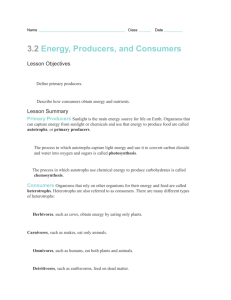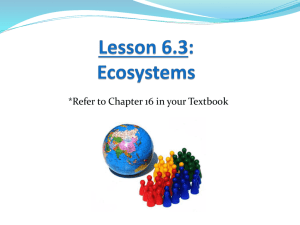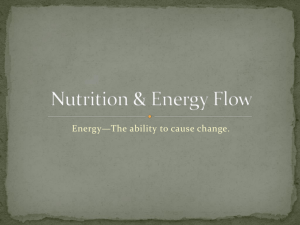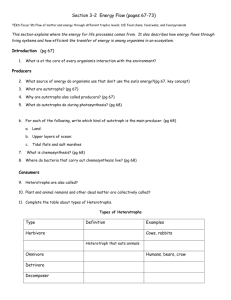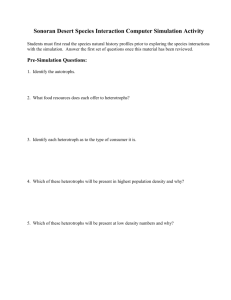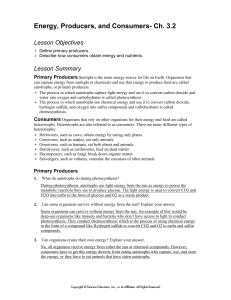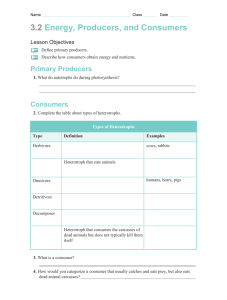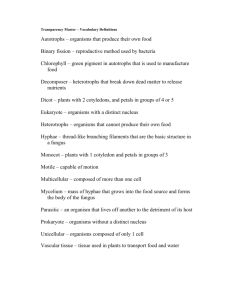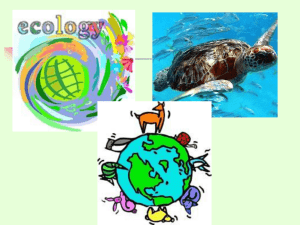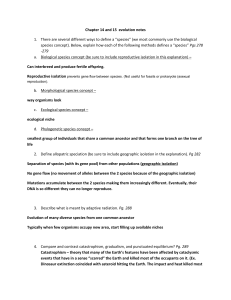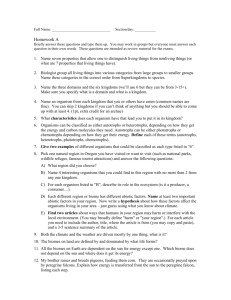Energy, Producers, and Consumers Worksheet
advertisement
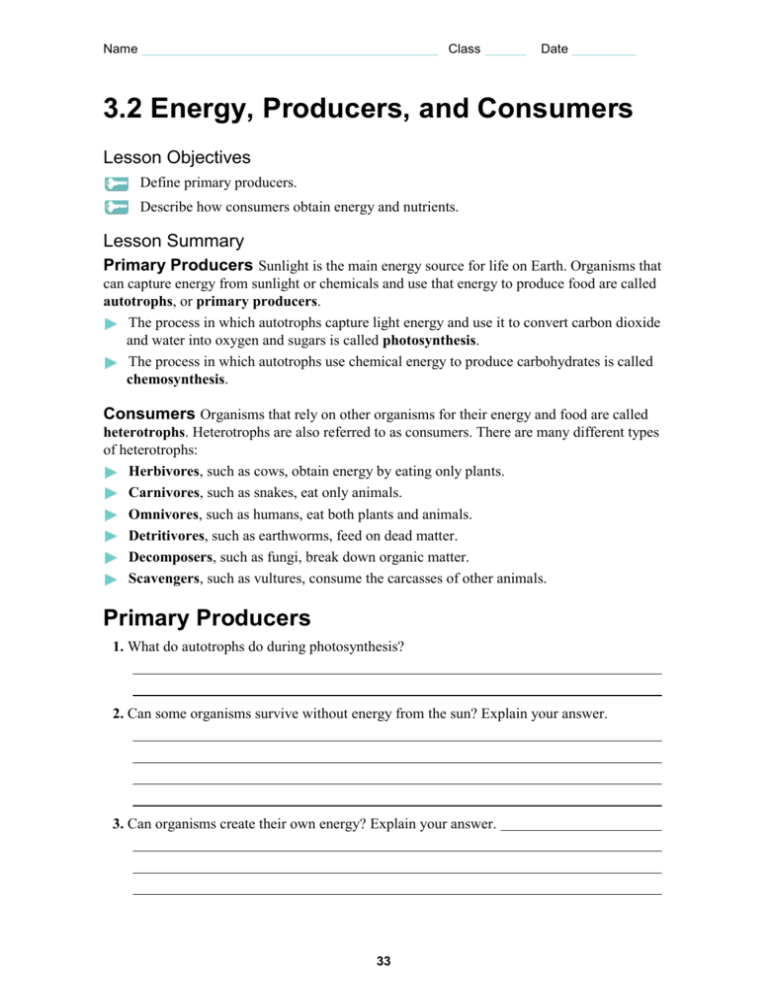
Name Class Date 3.2 Energy, Producers, and Consumers Lesson Objectives Define primary producers. Describe how consumers obtain energy and nutrients. Lesson Summary Primary Producers Sunlight is the main energy source for life on Earth. Organisms that can capture energy from sunlight or chemicals and use that energy to produce food are called autotrophs, or primary producers. The process in which autotrophs capture light energy and use it to convert carbon dioxide and water into oxygen and sugars is called photosynthesis. The process in which autotrophs use chemical energy to produce carbohydrates is called chemosynthesis. Consumers Organisms that rely on other organisms for their energy and food are called heterotrophs. Heterotrophs are also referred to as consumers. There are many different types of heterotrophs: Herbivores, such as cows, obtain energy by eating only plants. Carnivores, such as snakes, eat only animals. Omnivores, such as humans, eat both plants and animals. Detritivores, such as earthworms, feed on dead matter. Decomposers, such as fungi, break down organic matter. Scavengers, such as vultures, consume the carcasses of other animals. Primary Producers 1. What do autotrophs do during photosynthesis? 2. Can some organisms survive without energy from the sun? Explain your answer. 3. Can organisms create their own energy? Explain your answer. 33 Name Class Date Consumers 4. Complete the table about types of heterotrophs. Types of Heterotrophs Type Definition Examples Herbivore cows, rabbits Heterotroph that eats animals humans, bears, pigs Omnivore Detritivore Decomposer Heterotroph that consumes the carcasses of dead animals but does not typically kill them itself 5. What is a consumer? 6. How would you categorize a consumer that usually catches and eats prey, but also eats dead animal carcasses? Apply the Big idea 7. What role do producers play in establishing Earth as a living planet? 34
